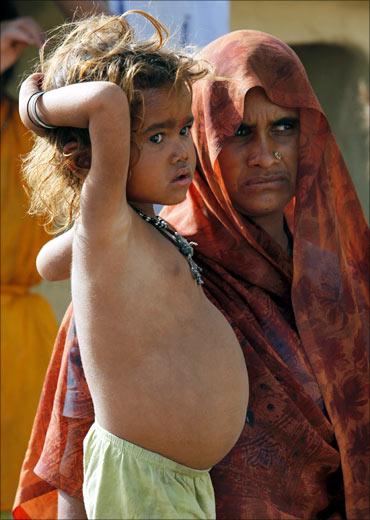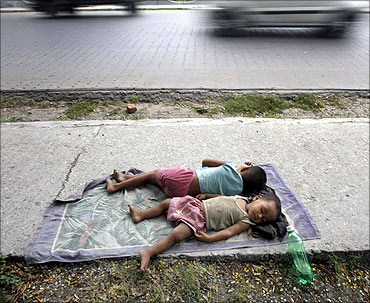
India's extremely poor score in successive years in the global hunger index (GHI) should remind policy makers of the unfinished agenda of liberalisation.
In 2012, the International Food Policy Research Institute (IFPRI), which constructs the index, ranked India 65th out of 79 countries.
In its South Asia report, India is clubbed with Nepal and Bangladesh in the category of "alarming" (just one rank better than "extremely alarming"); Pakistan and Sri Lanka come in at a higher rank of "serious" (below "moderate" and "low").
...

South Asia itself comes in at the bottom of the league, rubbing shoulders with sub-Saharan Africa.
India cannot quite think of itself as being one of the most promising of emerging economies, an engine of future global economic growth, while these numbers remain true.
In the IFPRI's index, hunger is measured through three indicators, which are given equal weight: undernourishment, indicated by the proportion of undernourished people in total population; the proportion of children under five who are underweight; and the mortality rate of children under five.
...

These indicators are open to question, given the continuing debate about whether global nourishment and weight standards can capture differences across various ethnicities.
It is entirely possible, many say, that South Asia's problem with undernourishment and underweight children is exaggerated because of the lack of locally determined standards.
However, comparisons in performance across time and within South Asia are certainly acceptable.
...

GHI scores for different years are not comparable, because the quality of data keeps improving. But data for three reference years - 1990, 1996 and 2001- have been made comparable.
India's progress since 1990 in overall undernourishment has been minimal, though it has improved nourishment of children under five (by 36 per cent) and mortality of children under five (by a substantial 82 per cent).
...

The explanation is simple: overall undernourishment is a legacy of the past; what happens during the first few years of your life determines your health status throughout your life.
The focus should, thus, be squarely on ensuring effective access of India's youngest citizens to nourishment and health facilities.
Once this is done on a sustained basis, overall undernourishment statistics will take care of themselves.
...

Comparisons with the rest of South Asia are also instructive. Bangladesh and Sri Lanka have shown a steady decline in hunger since 1990, but India's progress has been uneven.
There was a sharp drop between 1990 and 1996, but a setback in 2001 - from which India has returned to about the 1996 level in 2012.
Stronger economic growth than its neighbours has not shown up in India's social sector performance.
...

Sri Lanka's human development record is well known; that of Bangladesh is worth noting.
It has witnessed broad-based social development, helped by a vibrant NGO sector and public transfers to reduce child malnutrition among the poorest.
It has also reduced the gender gap in education through public intervention and overtaken India on a range of social indicators - including the level and rate of reduction in infant mortality.
It also regularly monitors child nutritional status, whereas India is behind time in underweight children statistics.